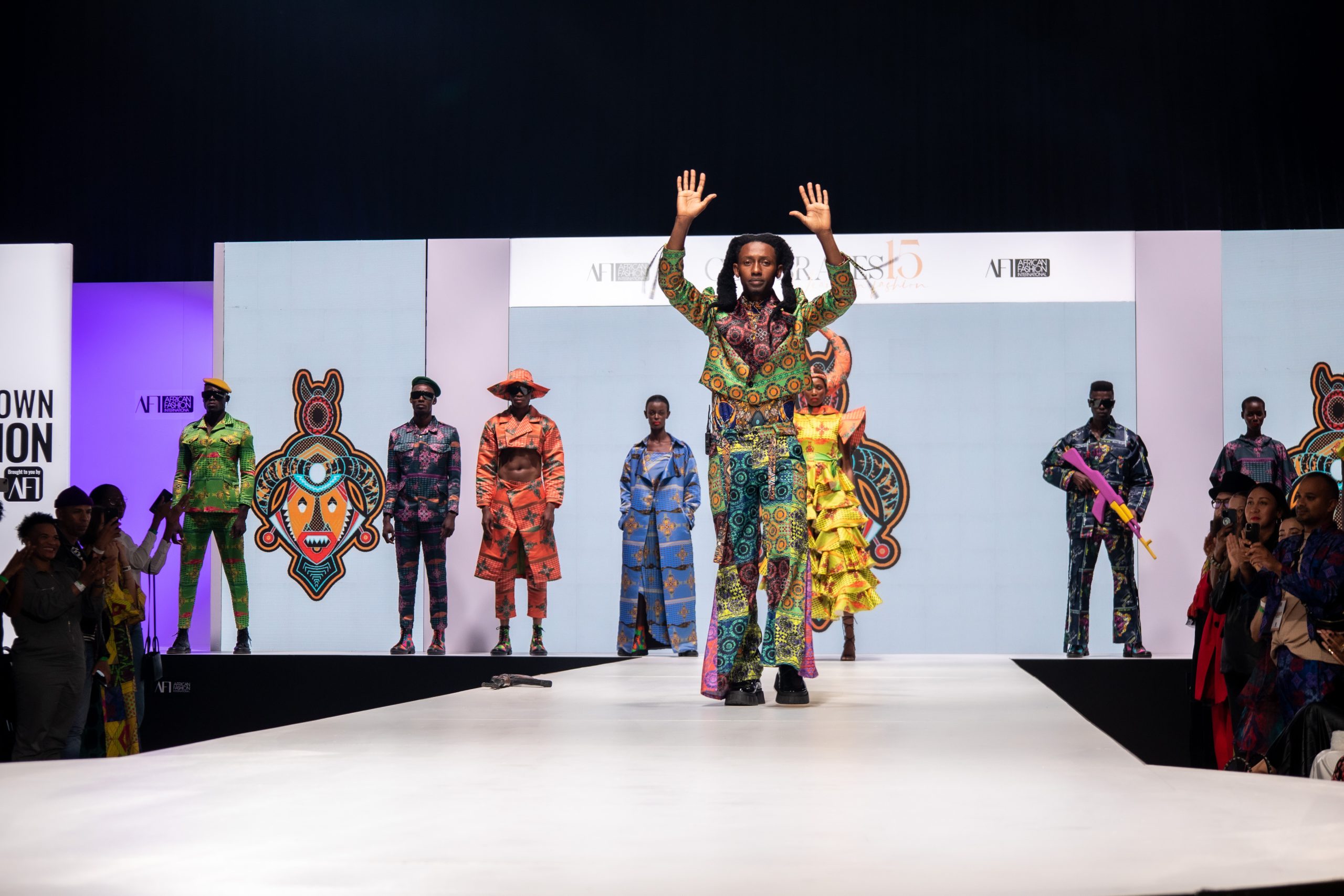It is not a requirement of artistry for the artist to bring themselves and their life experiences into their work. To believe so would be to discredit the many talented artists who act more so as documentarians, holding up a mirror to their consumers, rather than presenting a self-portrait. This is especially true in the case of fashion, where one is producing garments which are usually practical and appealing to varying audiences. One does not have to bring their personal experiences into the work. But what a treat it is when artists like Masamara bring themselves into the work.
Nyambaso Masamara, sculptor and designer of his eponymous fashion label Masa Mara, is a young Cape Town based designer born in Rwanda. He migrated to South Africa where he has lived as a dependent refugee under his car guard older brother’s guardianship. Skip ahead a few years and an educational background in accounting, Masa Mara opened the 15th African Fashion Institute (AFI) Cape Town Fashion Week (CTFW).



Before anything, AFI and Masa Mara promise a combination of the traditional and the new. The use of African tribal prints roots the clothes that make it down the runway or across an editorial in something greater. Something more historic. Yet, with each collection, there’s something new, distinguished from the others.
Masamara himself said in an interview with IOL: “Fashion is a language of the brave.” While he draws on the vocabulary and linguistic bases in his language, he strings together elements that communicate something entirely new every time. With every collection, in a blur of bright patterned textiles, there is a statement to be found.
This CTFW was no different. This statement, in particular, can be found in the title of the collection presented to the audience: “SILENCE THE GUNS”.
In a haunting combination of both fashion and performance, models take the runway in the signature loud prints of Masa Mara. They do so in a dutiful stroll. It isn’t a fierce catwalk moment at any point: each model is engaged in the importance of each step, acting with a restraint that contrasts the unrestrained colours of the clothing.
However, a link between the fashion and the walk is strong as ever with the clothes being tailored to a militant degree. The clothes are reminiscent of militia regalia in their crisp, hard lines. Even the unisex cropped jacket has a surprising seriousness to it. It isn’t jarring – it’s telling. The commonality in tailoring and pattern, between such a cropped jacket, the short sleeve, maxi length dress, and the interesting two bulletproof vest style dress shows that people from all walks of life are bound by the same serious conditions.


Some of the looks are styled with berets which very unsubtly points towards militia. Subtlety isn’t a goal for this show. The backdrop of this show is quite literally children bearing automatic machine rifle guns. It’s important to return here to the fact that Masamara was born as one of 13 children before the Rwandan genocide. Someone as young as Masamara, having a direct connection to the genocide is a reminder of just how recent those violent conditions are.
Masamara doesn’t need to be reminded. He shares in a voiceover of a video on Instagram: “My past stares at me, ever present, reminding me how I got each and every one of these scars.” The chilling audio accompanies a profile view of a soldier pointing a machine gun directly at the face of a model who comes out in a look which defines all the others.
It is not very serious, it does not ring like a uniform. It almost looks like something of a mythical deity, drawing not on the straight lines created by man, but on ruffled layers seen in everything from bushes to the crashing waves of the ocean. The look is also accompanied by a headpiece, with antlers or horns.
In this view, something magical and mythical is confronted by a gun-wielding soldier. Eventually, supported by the other models who had previously walked, the model in the deity look triumphs. The soldier takes a knee of submission and puts the gun down at the model’s high-heeled feet.



Perhaps for Masamara, this is a reflection of how through family and community, he was able to escape (at least physically) the violence he was born into. However, as a long-time Cape Town resident, he is likely aware of the presence of gun violence on shores called home. Perhaps it’s an act of manifestation. A little prayer, ironically only audible in the silence of guns.
Nonetheless, Masa Mara opened CTFW with something to say. Throughout the week, many clothes graced that catwalk. I have recently become more cognisant of the fact that sometimes clothing does not inspire critique. Clothing can just be nice and inspire nothing other than a passing reaction towards apparent beauty.
However, just as MasaMara said, fashion can be a language. A language towards a conversation of where we are; how far we’ve come (if far at all); how far we are from our siblings elsewhere on the content (again, if far at all). Having silenced the guns, Masa Mara opened CTFW with a show that left room to talk.






















































